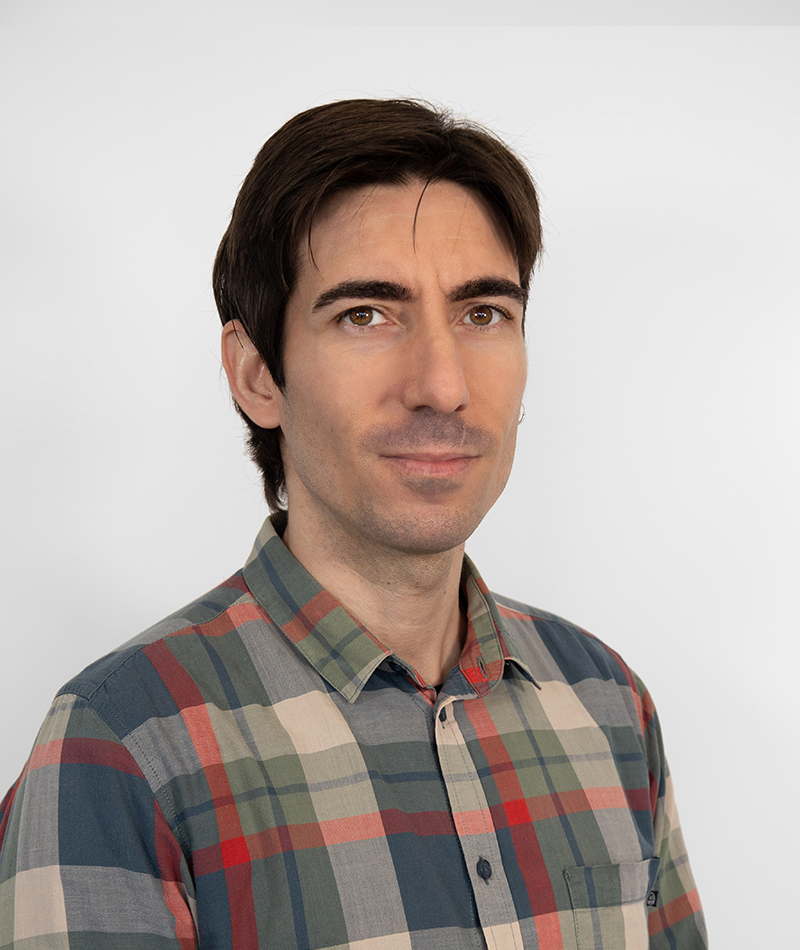
Space and Resilient Communications and Systems (SRCOM)
Email: marius.caus@cttc.catPhone: +34 93 645 29 00
Màrius Caus received his M.Sc. and Ph. D. degrees in Telecommunication Engineering from the Universitat Politècnica de Catalunya (UPC) in July 2008 and December 2013, respectively. Since February 2014 he works as Researcher at Centre Tecnològic de Telecomunicacions de Catalunya (CTTC). His main research interests include filter bank based multicarrier systems, signal processing for communications and satellite communications.
ORCID ID: http://orcid.org/0000-0002-1722-6319
Participation in projects
He has led as Principal Investigator 2 industrial contracts on precoding techniques in satellite networks and on integrated satellite and terrestrial architectures. He has participated in 1 industrial contract on the performance evaluation of satellite IoT systems.
He has participated in 3 European projects (PHYDYAS, EMPHATIC, FANTASTIC-5G), 2 European Space Agency contracts (AIM-SAT, SERP) and 3 national projects (GRE3N, ELISA, TERESA). He has participated in 1 network of excellence in research (SATNEX IV) with the European Space Agency. Within SATNEX IV, he has participated in 3 work items (1 as technical leader).
– FANTASTIC-5G. Role (WP3): Design of link adaptation algorithms and HARQ retransmission schemes using nonbinary LDPC in 5G communication systems.
– EMPHATIC. Role (WP5): Design of margin adaptive scheduling algorithms in filter bank multicarrier systems.
– PHYDYAS. Role (WP9): Developing a receiver prototype based on the WIMAX standard to evaluate the filter bank multicarrier modulation.
– SERP. Role (WP120): Design, performance assessment and implementation of frequency-packing techniques and binary LDPC codes to increase the spectral efficiency in multi-beam satellite systems.
– AIM-SAT (WP leader). Role (WP120): Design, performance assessment and implementation of decentralized multiuser detection techniques to combat interference in multi-beam satellite systems.
– TERESA. Role (Subproject Advanced techniques for satellite communication systems): Develop satellite air interfaces able to provide ubiquitous low-cost access and highrate services in the context of 5G and beyond networks.
– ELISA (WP leader). Role (Subproject New waveforms and multiantenna schemes for licensed and unlicensed shared access): Waveform and MIMO design.
– GRE3N. Role (Subproject LINK and MAC layer aspects): Contribute to the design of an energy efficient air interface using the filter bank multicarrier modulation scheme as waveform.
– SATNEX IV. Role (Workitem WI4.2-A NOMA Techniques for Satellite): Study of random access schemes that enable the heterogeneous coexistence of different class of terminals.
– SATNEX IV (technical leader). Role (Workitem WI3 Non-Orthogonal Superposition Techniques for Multi-Beam Satellite Networks): Investigate the rate bounds in multiple beam downlink channels.
– SATNEX IV. Role (Workitem WI7 Air interface development for LEO constellations): Design of PHY and MAC procedures robust to Doppler effects and large propagation delays to implement a LTE-based LEO mega-constellation system.
Grants
In September 2009, he was granted by the Spanish Government to carry out his Ph.D. studies in the Signal Theory and Communications Department at UPC. In 2018 he received the 2-year postdoctoral Juan de la Cierva fellowship from the Spanish Government.
Academic Mentoring
He has co-supervised 2 BSc Theses (June 2018, June 2017).
Other merits
He served as technical program committee of GLOBALSIP’19, EUCNC’19, EUCNC’20, ICC-Workshops’20. Since 2020 he is Senior Member of the Institute of Electrical and Electronics Engineers (IEEE). He is author of 10 Journals and more than 30 international conference papers.
As a member of the 5G Satellite Working Group of the IEEE International Network Generations Roadmap (INGR) he has participated in the Satellite 5G Roadmap report – 1st edition published by IEEE in December 2019.
Google Scholar: https://scholar.google.es/citations?user=BUwMtQQAAAAJ&hl=es
